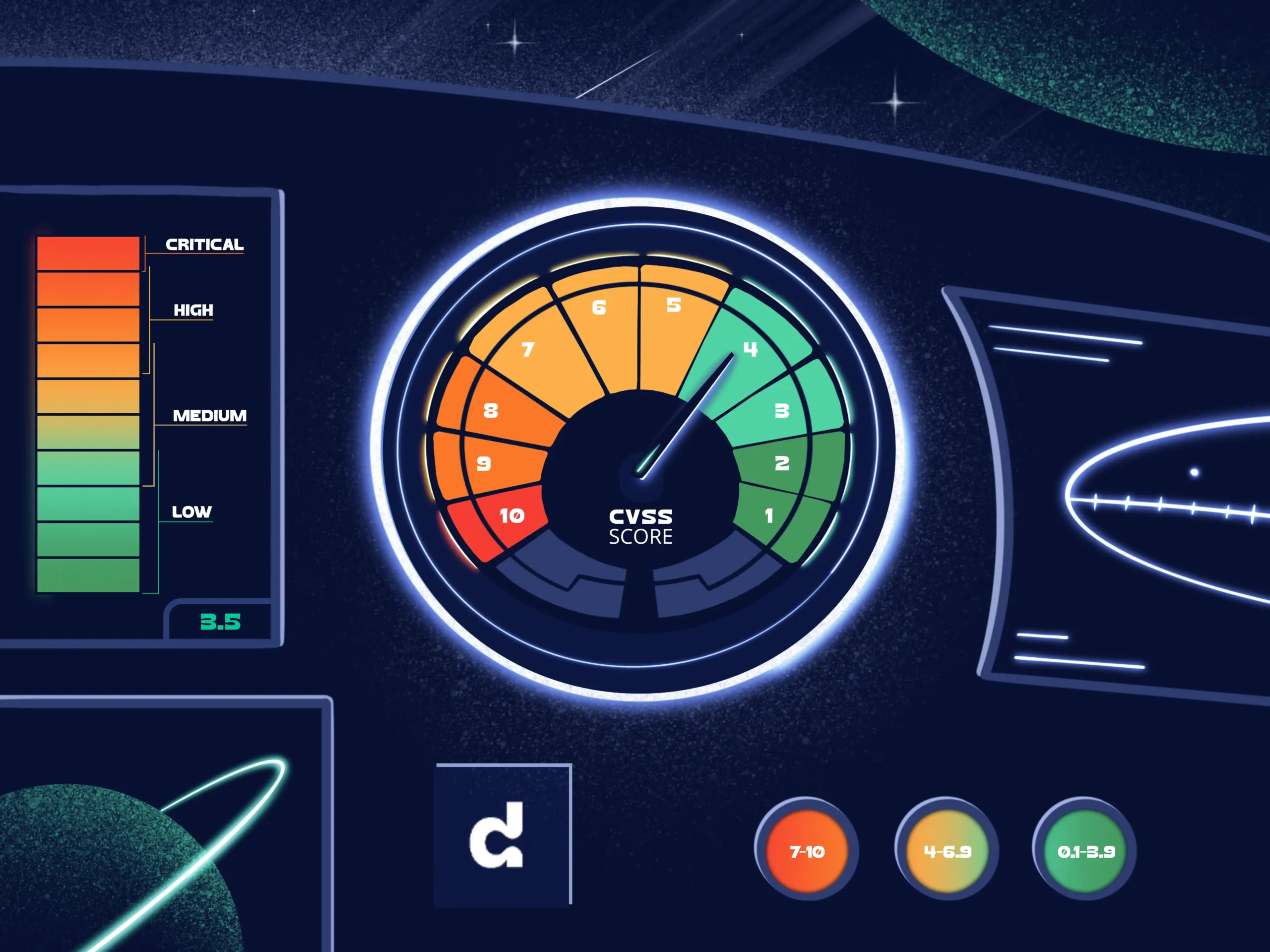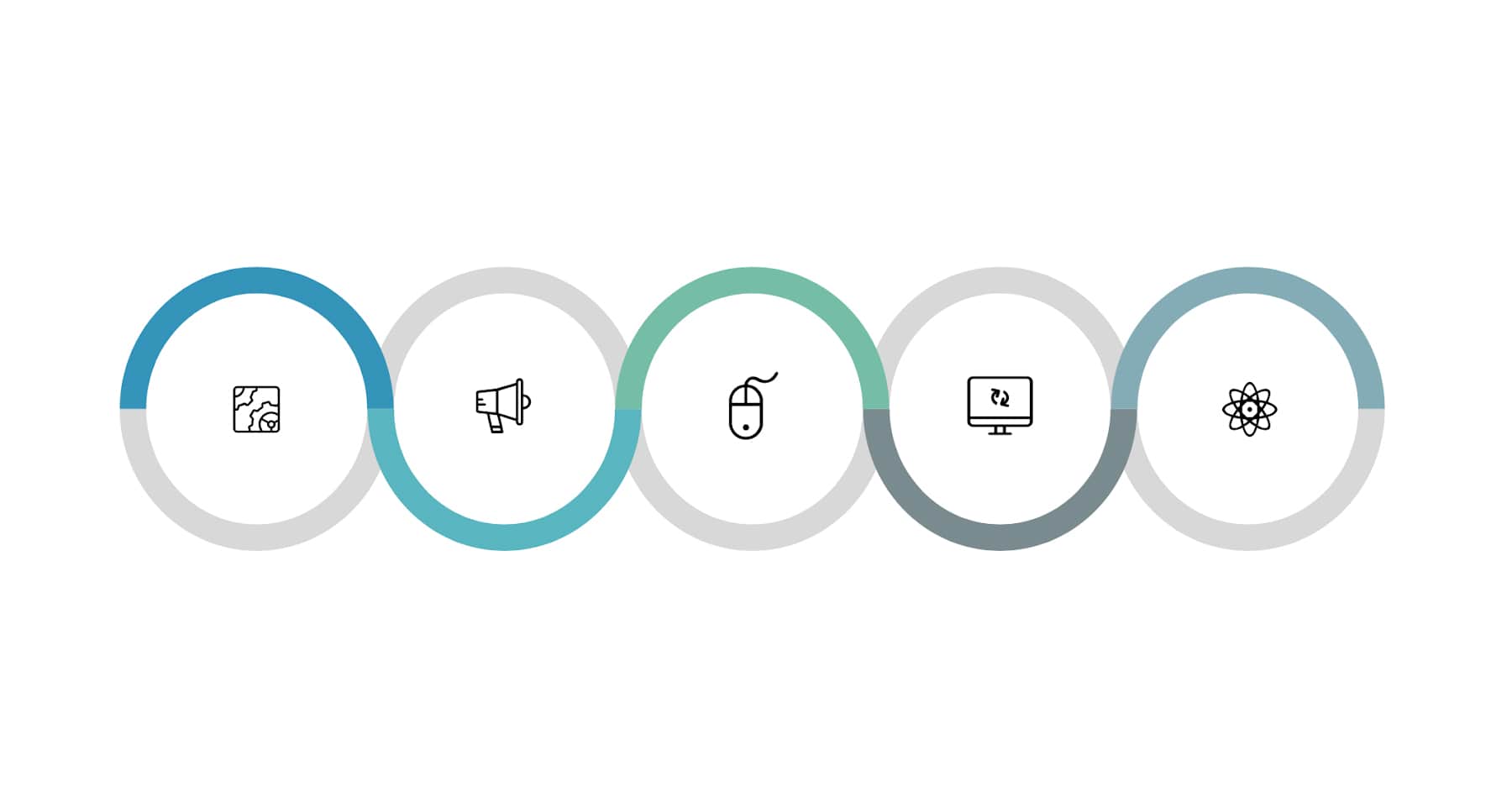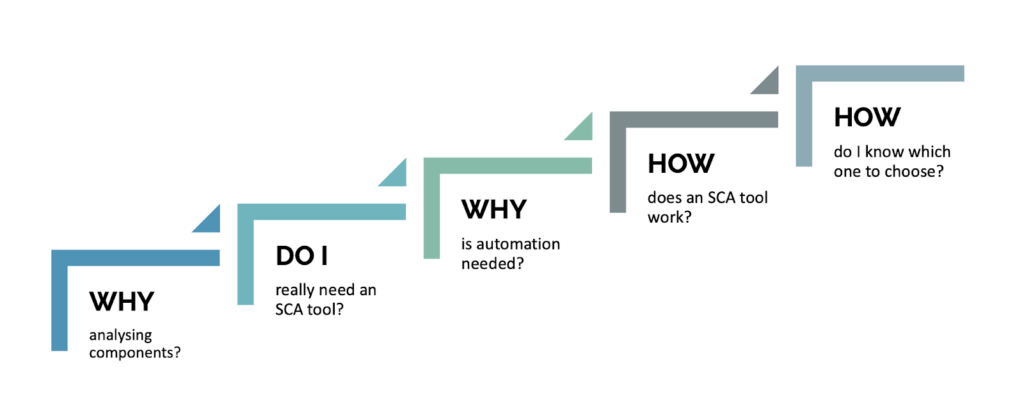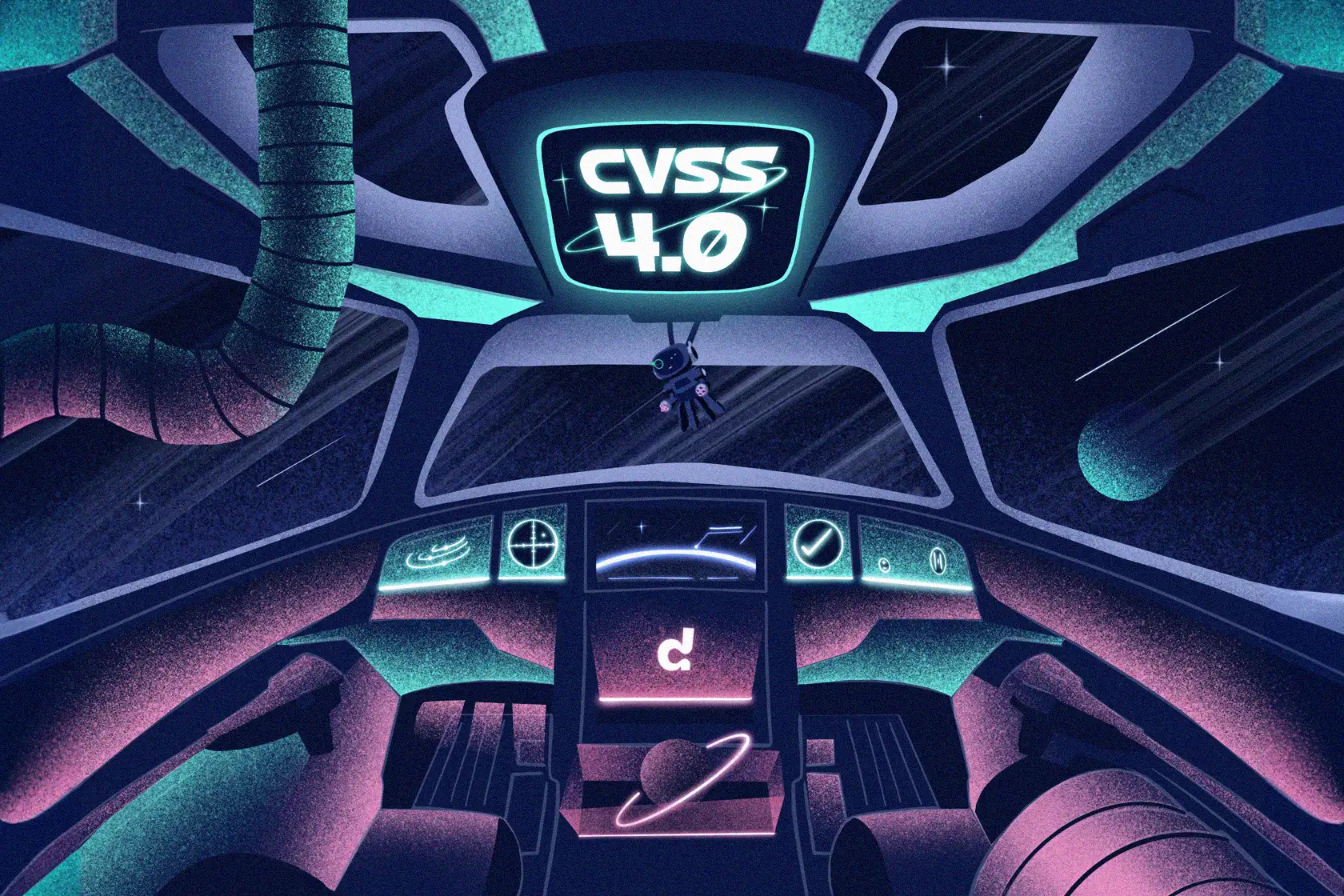
Your top five questions about SCA

With the fast growth of the usage of open source in all industries, the need to track its components becomes dire as ever. Software Composition Analysis (SCA) is an open source component management solution for providing and automating visibility into the open source in your software.
SCA tools help you improve the security of your code by managing the risks associated with using open source or third-party code in your applications.
Using open source code gives you the opportunity to save time and money, however, it carries certain risks, such as:
- Public vulnerabilities (e.g. CVE defined in the National Vulnerability Database)
- Risks associated with violation of licensing policies and IP ownership
It can seem like just any other security tool – why bother? To make this a little more comprehensible, we will go through the five most frequently asked questions in this post!

Why analyzing components?
Proprietary software is no longer dominant. The pace at which businesses reject the use of proprietary software provides great insights into the future of open source and its popularity. The main motivation for enterprises to shun proprietary software is the much higher speed for innovation when using open source, which allows them to be the disruptors of future technologies.
Open source has established itself as the new innovation engine, since the new age of the digital economy crafts its novelties with shared efforts, making it the foundation of modern software architectures.
That, in turn, has a straightforward influence on business values. However, regardless of the great benefits and popularity, the open source brings, the large volumes and array of choices signify how challenging it can be to navigate in the open source world.
Modern software usually consists of multiple open source components, integrated into complex ways. It allows us to deliver quality value and functionality at a high speed. As we know, open source has multiple benefits and it is hard to underestimate its popularity in the modern world.
However, in such a way businesses become responsible for the pieces of code written by someone else, and the variety and number of open source components quickly become difficult to keep track of. Thus, the analysis of components is a way to ensure the health of open source, by detecting potential risks before they are exploited.
Do I really need an SCA tool?
Nowadays, products and applications are made of hundreds and thousands of open source libraries, which can amount to over 80% of the code. Over the last years, the majority of the breaches happened through vulnerabilities in the application layer, making it one of the main target areas for CISOs.
So, what is the best way to prevent them? Of course, it is preferred to detect the vulnerabilities as early on as possible. The earlier a vulnerability is detected, the easier (and cheaper!) it is to fix. Putting security in the hands of developers, enabling them to scan for vulnerabilities every time they push code, minimizes the risk of bringing in critical vulnerabilities.
Software composition analysis tool can assist you in detecting and patching any vulnerabilities in the open source used in your application. Let’s look at an overview of the reasons why this is a must-have security tool:
- It automatically detects and send alerts about vulnerabilities, and often suggest a way to fix it.
- It often provides you with fixes, making the process almost effortless – allowing you to solve the vulnerability just by pushing a button.
- It also often allows for the prioritization of alerts, simplifying the process of categorising the vulnerabilities based on the severity, type and urgency.
- It can assist in pre-usage alerts of faulty libraries to prevent their integration.
So, to answer the initial question of if you really need a software composition analysis tool or not, it depends. If you would like to get an improved overview of the open source components of your software without having to spend hours on manual work, we’d suggest ‘yes’.
Why is automation needed?
The use of open source nowadays cannot be underestimated. The number of dependencies in a regular-sized product can be uncountable, which implies that manual tracking of it becomes close to impossible. To avoid tedious manual procedures, automation becomes the obvious solution.
A well-made tool can empower developers by rather than forcing them to make more security-related decisions, by allowing them to operate more freely and placing the main security responsibility on the tool itself.
Often when talking about DevSecOps or shift-left security, we put a lot of responsibility on developers by saying that security should be a priority from the very beginning. It might be true, but we tend to forget that developers are not security people, and they should not have to be.
Making security an easy task by using an automated tool can help your developers feel more comfortable and certain, thus improving both security and leaving more time to writing code.
How does an SCA tool work?
The market has expanded rapidly in the last 3 years, growing by 20.9%. Therefore, SCA solutions are leading the security market with risk management tools. So, what does it actually involve?:
- Alerts on possible vulnerabilities which allow to fix them precisely and quickly
- Integration within the development process and environment – analyzing and detecting dependencies in the current workflow.
- Keeping track of the licenses associated with the components, making sure you are always compliant.
- Giving you a clear overview of all the open source components and dependencies in your software – no surprises!
To illustrate the power of an SCA tool, let’s dive into an example:
Debricked’s tool assists in a continuous analysis of the software to detect open source vulnerabilities. It also helps the user prioritize and gives suggestions of fixes. Debricked integrates with the CI/CD environment for enhanced continuous scanning, every time you push code. Its user-friendly interface allows visualizing the repositories, vulnerabilities, commits, and dependencies, as can be seen in the screenshots below.
Shortly, the Debricked tool will also offer the possibility to create customized policies and rules, making the automation
How do I know which one to choose?
Software composition tools assist in analyzing open source components, direct and indirect dependencies, and alerts you of any vulnerabilities. However, how can you know which tool suits the specific needs of your business?
This question is rather complex to answer as there is no adopted standard in the evaluation of software tools. Software composition analysis is a perfect solution for holistic decision-making regarding the choice and tracking of open source libraries.
Yet, there is no SCA type that would be a panacea to app security, however, it is essential to choose the one that includes in-depth coverage specific to your product or application.
Recently Ibrahim Haddad, VP of the Linux Foundation, started creating a collaboration document with the objective to find standards and metrics for evaluating software composition analysis tools. Debricked added a set of metrics that we think are important, and we encourage others to do the same.
Conclusion
Using software composition analysis makes open source a powerful asset to your company, rather than a risk. An SCA tool is what is needed nowadays to analyze the complex structure of software components and leverage the undoubtedly growing strength of open source software.
Setting the priorities straight will help you navigate the sea of various tools to make the best out of your unique product! Thus, if you are looking for a way to strengthen your security portfolio, adapting an SCA tool becomes one of the best solutions. Don’t forget to check out Debricked’s tool for solving vulnerabilities in open source dependencies!


